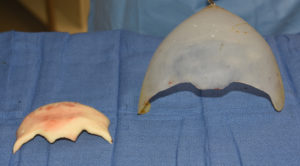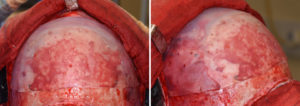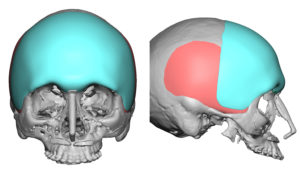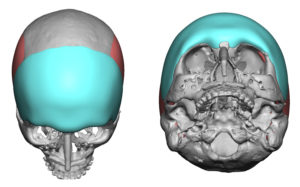Background: The size of the forehead has a major influence on the appearance of one’s face, occupying the entire upper third of it. Beyond its size the shape of the forehead is also important with many gender specific features. In general, males have stronger brows, a wider forehead and a gentle backward slope to it. In contrast female have no brow bone protrusion, a convex forehead shape that has a more vertical orientation.
\Of all the facial bones, the forehead is the least commonly augmented. Intraoperatively shaped bone cements and preoperatively shaped custom implants are the two most common methods of forehead augmentation. Given the advantages of a more thought out forehead shape design and the ability to place it through a small scalp incision, custom forehead implants are usually the superior treatment approach.
But the success of a custom forehead implants comes down to its design. While computer designing an implant has many advantages, what the best shape and dimensions are that can create the patient’s desired forehead shape is not a mathematical calculation. It is an art form that is based on the surgeon’s understanding of the patient’s desires and experience in appreciating the effects of various designs on the outward aesthetic outcome.




When designing a forehead implant there are four surface areas or zones to consider. They are the brow bones, the mid- and upper forehead, the temporal lines and the temporal zones. (often referred to as the sides of the forehead) The coverage or lack oil coverage of these areas must first be considered before determining what thicknesses they should be.
Highlights:
- Subtotal forehead implants often leave the forehead inadequately augmented.
- Custom forehead implants must consider the impact on the entire forehead as well as the adding temporal regions.
- Complete frontal augmentation covers the entire forehead as well as the temporal areas.
Dr. Barry Eppley
Indianapolis, Indiana





